When fanatics argue for things to be more “hardcore,” what they’re really asking for is purity. They want the frills stripped away so that the raw form of their obsession lays bare before them. Economic pragmatism has meant that drivers have been left lately without too many options in this regard, forced to reach deep into their pockets if they wanted a true sports car. They have long cried out for manufacturers to bring back the choice of motoring joy to the people, no longer restricting them to front wheel drive unless they were above a certain pay grade.
Toyota has heard the call and has answered it loud with the Scion FR-S. Choice has returned. Driving is back.
“Driving is back” is exactly what is said in latest TV ad for the Scion FR-S, but had it really gone away? It’s certainly been a little out of reach for most at least. The selection of sporty rear-drive coupes here in the United States under $30,000 could barely fit a post-it note, shorter still if you rule out any American muscle manufactured by the big 3, and even those prices are climbing out of the bracket. But were there still people out there that even wanted something “pure”?
Maybe driving went away because the driver itself became endangered since people nowadays “pilot” their cars instead of drive them. They want to shuttle to and fro affordably, in safety and relative comfort. Fun doesn’t enter into it. Were there real drivers among the meek rabble of people young and old who can’t afford BMW’s and Nissans? Yes, it turns out, and Hyundai has reaped the benefits with the bold introduction of the Genesis Coupe. We tested it a few times. We really liked it. And while we were excited to see more of them, we were even more elated for what would follow: Competition. Toyota and Subaru have put their heads together in a joint venture to bring a contender to the coupe arena with a car that’s light, quick and fun. If the Genesis Coupe is the car drawing a line in the sand, the FR-S is the one stepping over it.
The Scion FR-S, known overseas as the Toyota 86, draws from specific hallmarks in Toyota’s motorsport history. Back in the early sixties, the Sports 800 debuted as the sports car for the masses in Japan. What followed shortly after was the 2000GT, Japans first supercar that went on to smash dozens of motorsports records and became the car of prominence for the country’s elite. The FR-S takes many design cues from the latter, while maintaining the idiom of the former. Closer still is the heritage of the Toyota AE86, the chassis code of the Corolla and Sprinter of the mid-eighties. Vehicles on this chassis were popular with enthusiasts as manufacturers of the era were switching to front wheel drive, while the AE86’s remained RWD. The AE86 was light, inexpensive, and easy to tune, making it the car of choice for Japan’s drifting and street racing crowd. By the time Drifting flourished as a popular sport across the globe, the AE86 was deeply rooted in Japan’s car culture and grew as a legend with each passing year. Even today, mention Hatchi-Rokku, (“eight-six”) to any Japanese auto enthusiast worth their salt and you’ll get along just fine.
The Scion FR-S is smaller than expected at first sight, sitting 50 inches from the ground, of which only five is ground clearance. With a short back and long front, the FR-s sports a fascia with a low trapezoidal intake and pointed front that flows from two upward flares housing the front 17” wheels. The FR-S comes in a range of seven colors like “hot lava” orange and ‘ultramarine” blue, along with standard black painted rims. A prominent badge at the base of the a-pillar proudly denotes its boxer engine configuration and 86 heritage. Chrome tipped dual exhausts jut from the undercarriage in the back and flank a low center mounted stop & reverse lamp.
Beneath the long hood is a 2.0L 4 cylinder boxer engine, allowing for the low slung chassis and balance that Toyota was hoping to achieve. The engine featured direct injection and produces 200hp that feels sufficient for the needs of a car so light. Off the line, the FR-S will pull a 0-60 in 6 seconds. Yes, it’s not the best number, and the 151 ft.lbs. of torque is this powertrain’s only major shortcoming. Speaking of numbers, the Bore/Stroke ratio of the engine is 86mm for both, and while it’s not an uncommon figure, it’s no coincidence that it’s found in the heart of this car. Power is transferred through a six speed transmission in either manual or paddle shift for the automatic. The manual transmission on the Scion we tested suited the car wonderfully. Each throw was short and quick, with a clutch that only needed a light touch to flick through the gears. The contact point was wide and it was almost an issue to lift off the line in a civilized manner. Once on the move, the FR-S engine responds beautifully, allowing for long revs that climb well past 7,000 rpm. Sport mode sharpens the response further, turns stability control off and loosens the grip of traction control.
If judging by the diminutive exterior of the Scion, you’d guess the interior to be quite small, and guess what: it is. That’s not to say the driving position is cramped, it’s actually very comfortable for both driver and passenger, just don’t think another couple friends will remain your friends after stuffing them in the rear. A decent sized driver like me had seat almost flush against the seat behind me. Speaking of seats, the stock race inspired driver and passenger seats are solid and bolster extremely well by both the hips and shoulders. They’re manually adjustable, and it’s easy to find a solid configuration that’s comfortable. Black is the one interior color available, with red highlight stitching along the seats and the steering wheel. It’s mostly all rubber surfaces, with a few hard plastics mocked up in a carbon fiber pattern, which looks inexpensive, but doesn’t feel cheap. The steering wheel is small and firm, and it feels like a solid racing wheel.
The standard entertainment option is a 300W Pioneer stereo system with Bluetooth pairing for both hands-free phone use and audio streaming. USB connectivity for audio devices is available, but having your phone paired wirelessly for talking and music while plugging it in the USB seems to confuse the heck out of it. The FR-S will be further baffled if something is placed in the passenger seat heavier than a bag of chips. I often plug my phone into the stereo and toss it on the seat beside me so I don’t need to fumble with it if I’m using navigation, and on a few occasions, the FR-S determined that I’d somehow acquired a passenger mid-journey, and demanded my phantom companion buckle up by pausing the audio until they did so. I wouldn’t mention it if it only happened once.
If the power output didn’t meet expectations, the handling exceeds them. With Independent Macpherson struts in the front and double wishbones in the rear, coupled with a limited slip differential, the low and light car glides tightly through turns like its on rails. In fact, for those looking to skirt around corners sideways like its elder brethren, the FR-S can be difficult to unsettle. Even with sport mode on and traction control off (the purposefully make it difficult to shut these fully), it takes great effort to push the engine and the tires past their threshold. the car gave way in a quick and unruly snap, getting away from me where a car with more power would be easier to control. It’s not impossible and those who want to drift it will, even if it means tweaking a few things.
That being said, you’ll never hear me complain that a car has too much grip like it’s a negative thing. The FR-S would make an exceptional track toy, benefiting experienced racers and newcomers alike. It has the agility that pros can use to its potential, while having the balance that novices can handle without an overwhelming amount of engine power.
Road feel and visibility are exceptional and the driving position is suited well for any performance driving you may want to attempt. Since there’s hardly any noise dampening and you’re sat so low to the road, the sensation of speed is unhindered in any way. Even in the rain, there’s no nervous behavior, so neck hairs stand down from alert positions.
When racing or driving the beans out of the car, the FR-S is a wonderful place to sit, but as a daily, it might be a little too raw for some people. The interior is clearly designed to be inexpensive and to appeal to a younger audience. Your senses are open to the world around you as every sound flows through the cabin as very little noise is blocked out. Wheels drone, the engine whines, and driving in puddles make you flinch for fear of getting wet. The great bolstering racing seats can be back-breaking for long journeys, particularly in traffic, and broad shouldered people will find their posture wrecked after a while as the seats force you to cave in slightly.
Stacking it up against its rival, the Genesis Coupe? Compared to the 2.0T, the numbers are close. The base model edges the power out by 10hp, and schools the Scion on torque (223 lb. ft. vs.151 lb. ft.). The Genesis Coupe is however bigger and heavier by around 500 lbs. The final blow is that the 3.8L Genesis within reach by just under $5,000, and that makes it a win in my eyes. It may have been a little unfair to stack them together: the Hyundai has been around longer, and while it wasn’t perfect when it debuted, it has had time to develop, plus the option of a higher powered engine gives it the trump card.
Sticking with the poker analogy, the FR-S was dealt an unfair hand when it came to badging here in the States. We’re happy to give Toyota the respect its due, but the Scion brand doesn’t carry the weight this car deserves. I found myself saying “Toyota” more than Scion, and when I did name it correctly, I kept having to defend it when the inevitable incredulous glance came my way, mumbling about the Subaru partnership. Indeed, the twin sister of the FR-S, the Subaru BRZ can’t stay on the lots. I suspect this is due to brand loyalty more than any real comparison to the two as they’re meant to be identical mechanically (Subaru also offers two trim packages that up the interior quality & price).
The name on the front shouldn’t matter, though, as the FR-S’s actions speak louder than the badges. The Scion is a fun to drive, sharp looking car that is well balanced for maneuverability. It has just enough power to suit its needs, and at an MSRP of $24,200, it will be high on the list of young drivers looking for a first car, or anyone looking for an inexpensive track or club racer. Our test car priced out to $25,066, and the only other real option we lacked was the BeSpoke navigation and audio system, which bumps the price up by around $900.
Toyota nailed every mark they were looking to hit with the Scion FR-S: sportiness, accessibility, and style. Adding heritage in the mix gives it some heart as well. Driving is indeed back, with a vengeance.
-Promiscuous Data-
Accolades – A thumbs up on day one pulling out of a shopping center, a son pointing out the car to this father and launching into an explanation while at a red light, a lady walking her dog in Brooklyn asking questions at a photo shoot location, one gas station conversation.
Notable Rivals of the Week- one persistent black-grilled Ford Fusion driver desperate to overtake, a flood on day 7, The Scion stigma.
Price – MSRP $24,200, test car $25,066
Availability – Now
Fuel Eco – 22 City/30 Highway 27.8 averaged during test.
Bottom Line – A must drive.
Words By – Alex Kalogiannis
Photos By – Sean Spencer

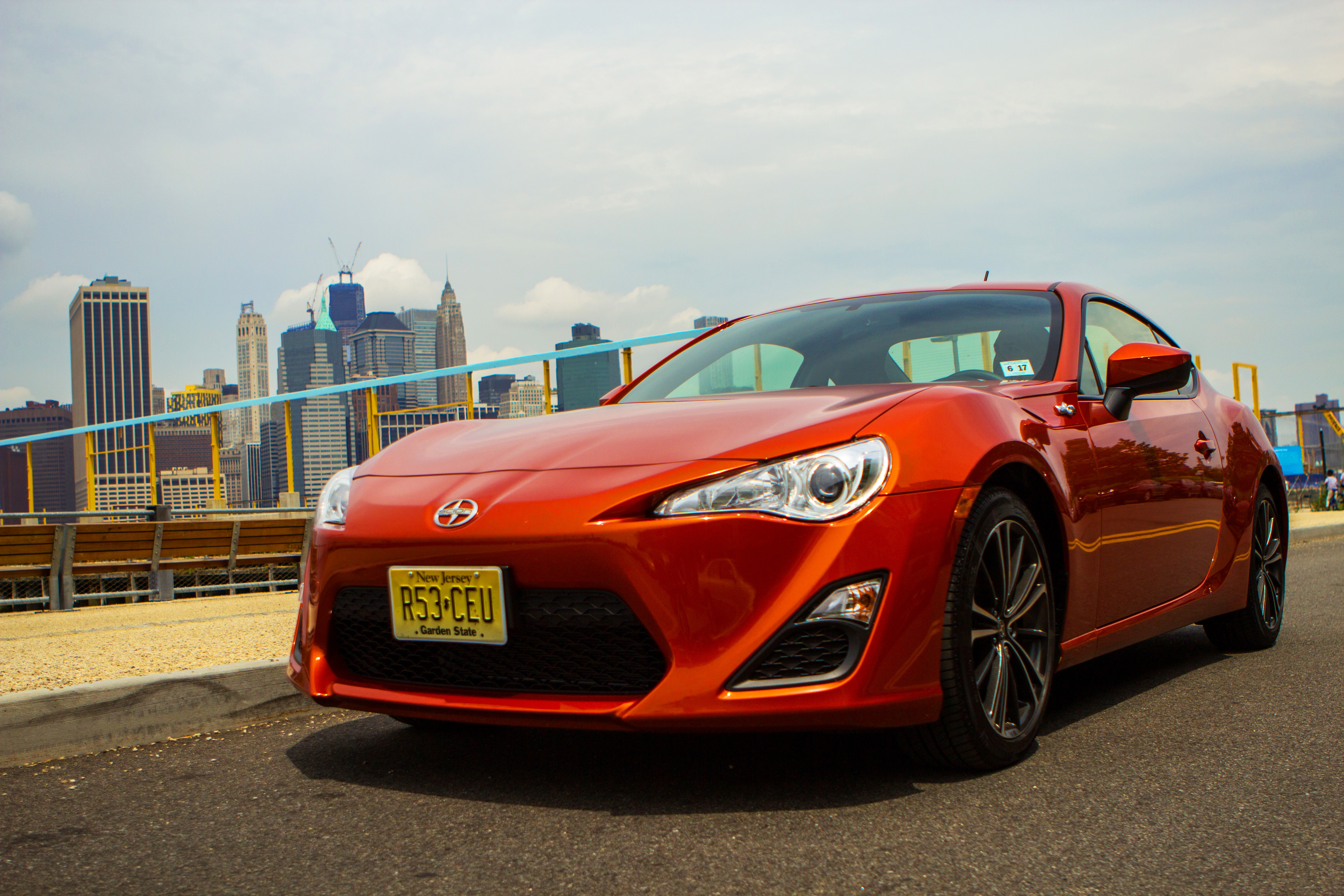
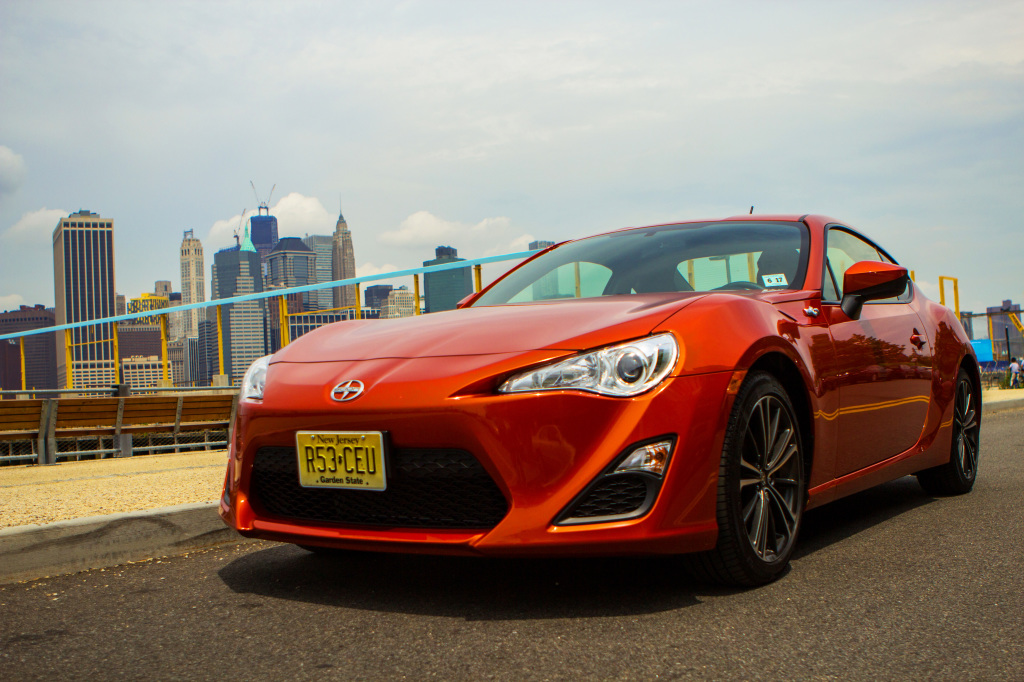

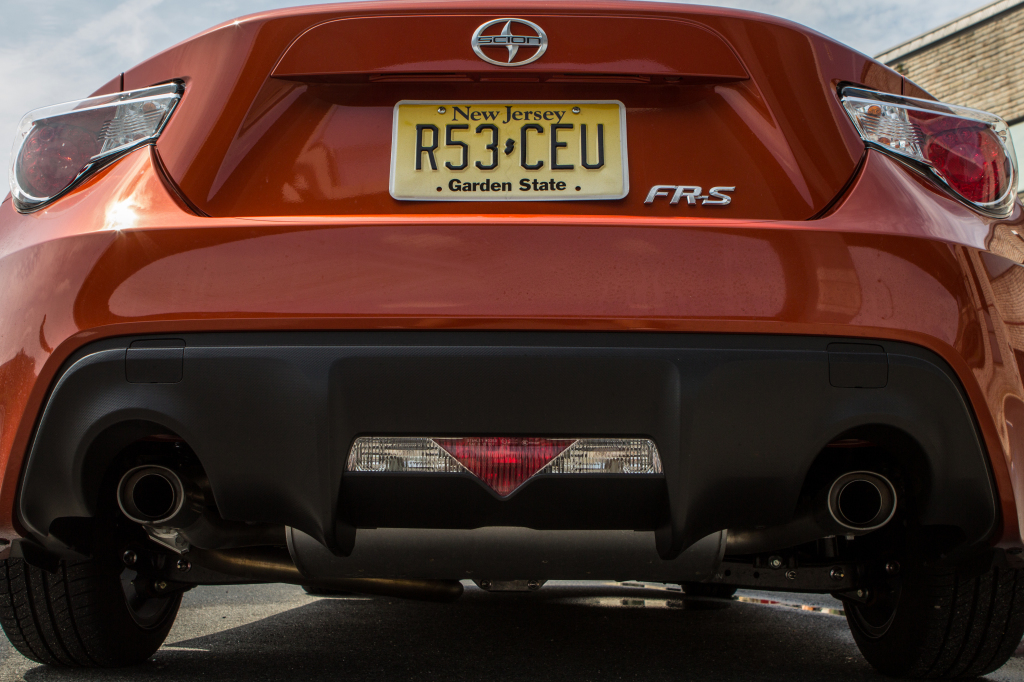


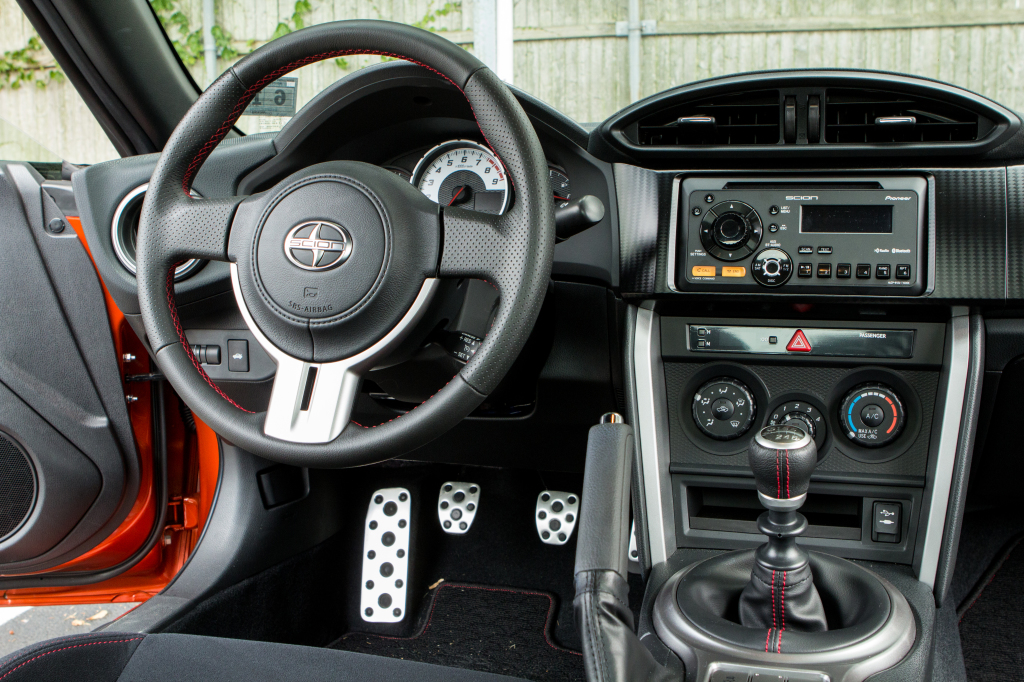
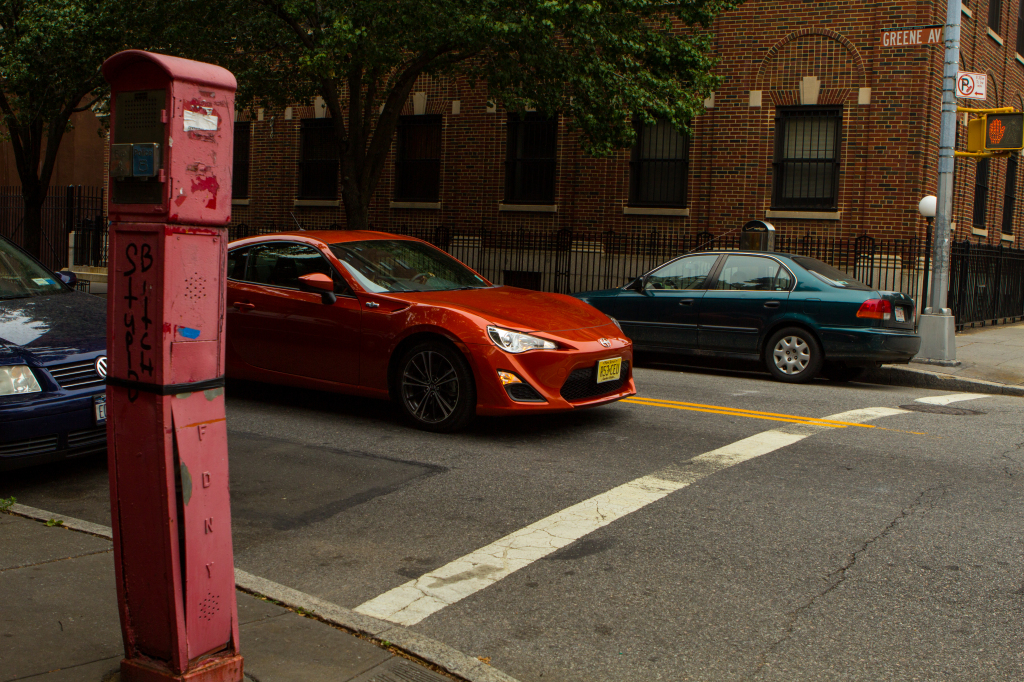
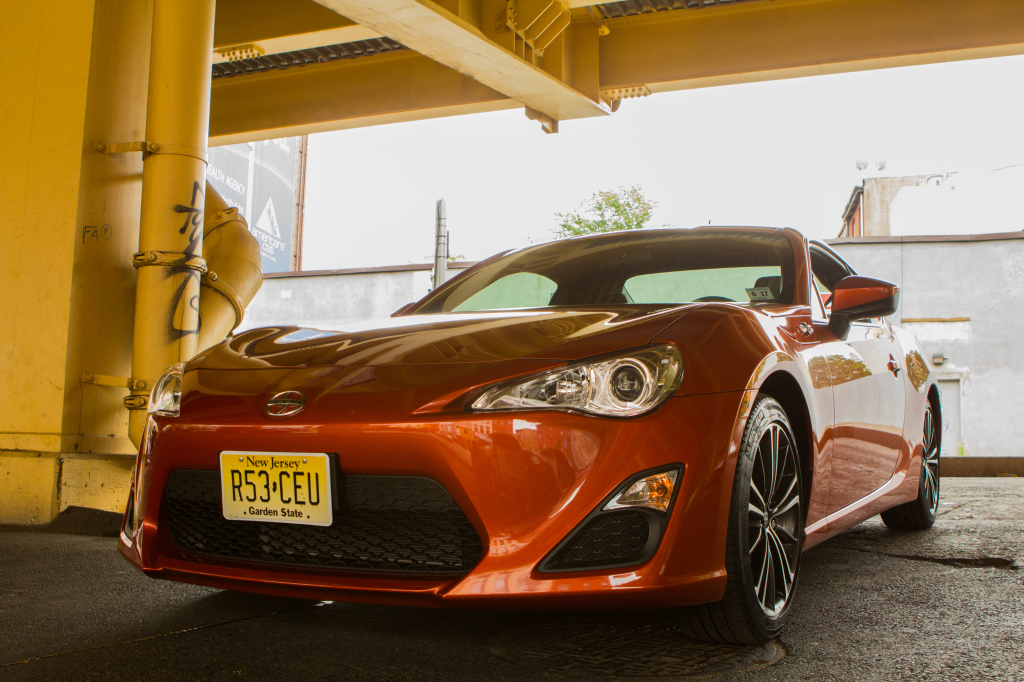
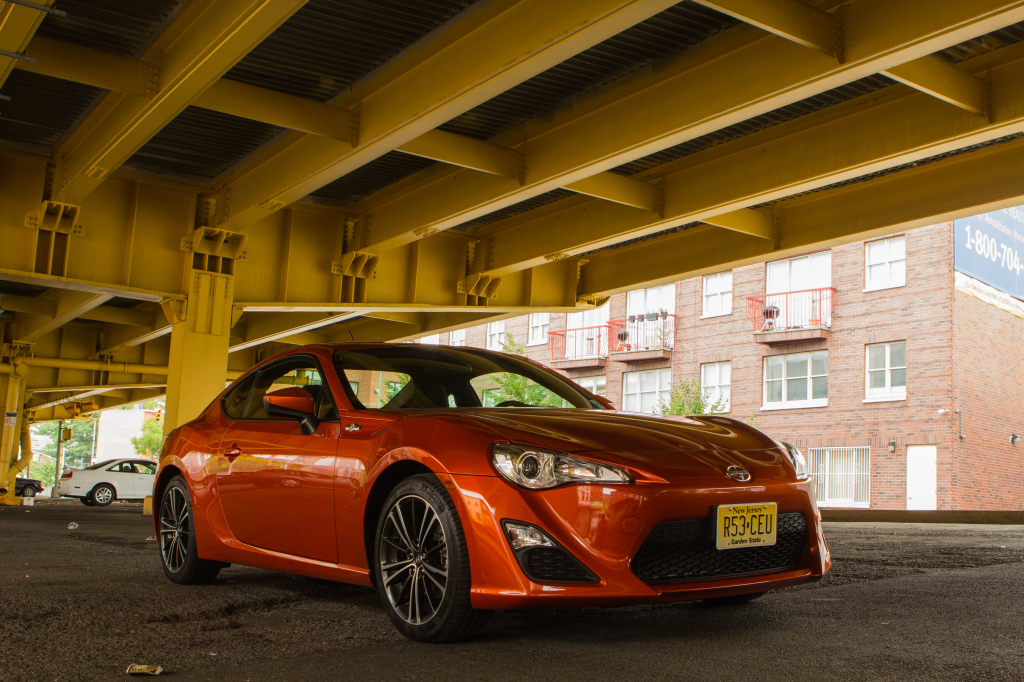
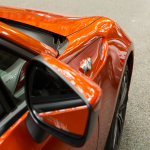

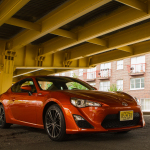

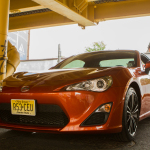
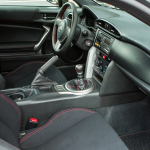
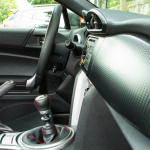

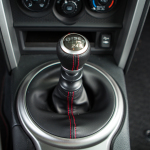

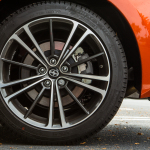
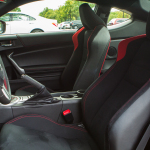



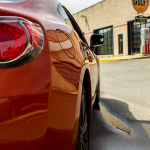
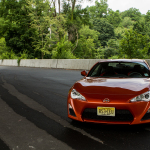

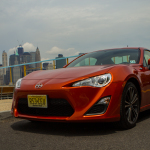
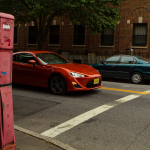
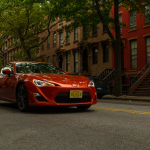
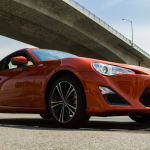
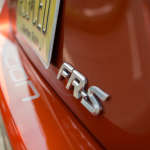
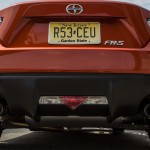


4 thoughts on “Stark Enterprise: 2013 Scion FR-S Review”